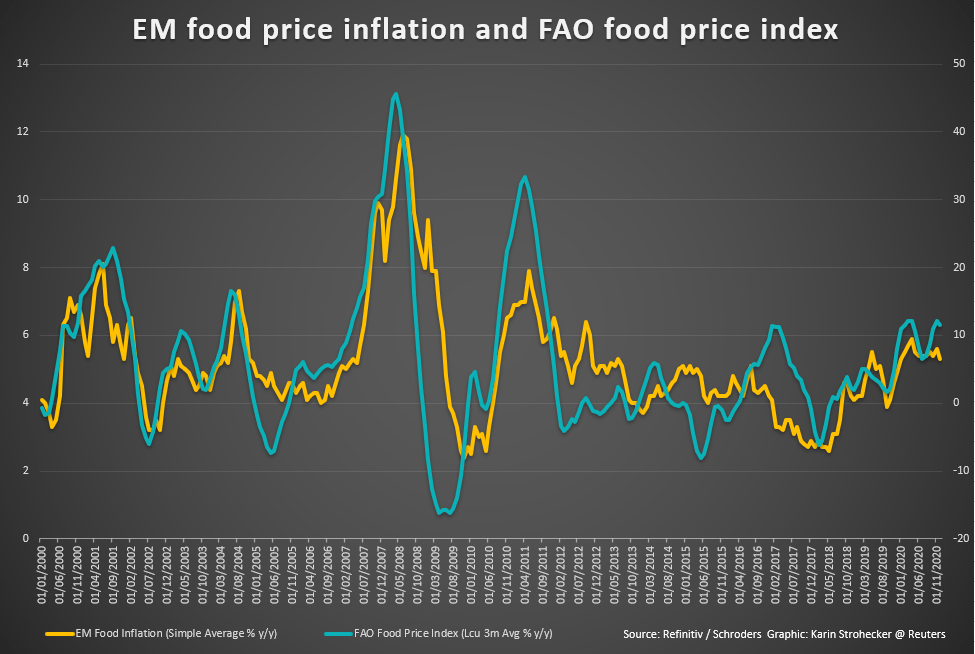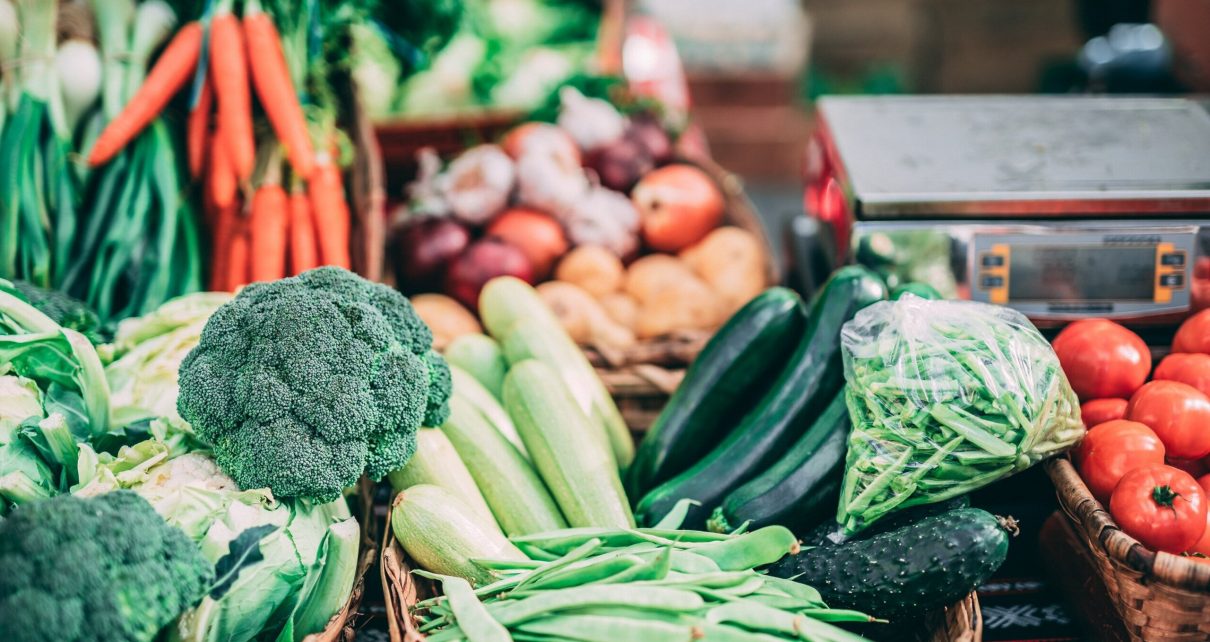For Cleanne Brito Machado, like millions of people in developing countries around the world, shopping for staple foods such as rice, beans, oil or potatoes now means making hard choices.
“The shopping cart is getting much smaller and we’re paying much more,” said the 41-year old, who works as a maid in Brazil’s capital Brasilia. “We’ve had to give up on little trips, visiting family at the weekend, and we haven’t been able to save any money for emergencies or to have in the bank.”

A mix of currency depreciation, rising commodity prices and coronavirus disruptions saw food inflation soar 14% last year in Latin America’s largest economy – the biggest increase in nearly two decades. The headline figure masks hikes in staples, such as a 76% jump in rice or a doubling of soy oil prices.
Other developing countries from Turkey to Nigeria also recorded double-digit jumps in food inflation. Major wheat and corn exporters such as Russia or Argentina have introduced curbs or taxes to preserve domestic stockpiles, exacerbating pressures elsewhere.
United Nations data showed food prices hit six-year highs in January after rising for eight consecutive months.
The unwelcome return of food price pressures has put policymakers and investors on high alert, worried what it means for inflation more broadly while economies are still reeling from the coronavirus crisis.
“Central banks will be watching the level of food prices quite carefully over the next few months because they will have to make a decision on whether to respond to this or not,” said Manik Narain, head of emerging market strategy at UBS.

Food is the single largest element of inflation baskets in many emerging markets, accounting for around half in countries like India or Pakistan compared to less than 10% in the United States.
Rising food prices have contributed to social unrest in the past. Climate change effects are expected to exacerbate price swings and rising energy prices add to the pressure.
For those like Machado, higher food bills leaves less to spend on other goods, squeezing demand for items from travel to eating out.
Many countries have already seen hard currency revenues from sectors such as tourism crater and they lack the capacity of their richer peers to pump in stimulus.
For central banks, the temptation may be to let inflation rise and keep monetary conditions loose to support growth, say analysts.
“It is a very difficult balance – governments in emerging markets are damned if they do and damned if they don’t,” said David Rees, senior emerging markets economist at Schroders.
“As a policymaker – do you choose to support your population or choose keeping the markets happy?”
Developed economies generally see food inflation as transitory. But in developing nations, persistent food price rises in the run up to the 2008 financial crisis lifted core inflation, prompting years of interest rate hikes.
CAUTIONARY TALE
In Istanbul, food market vendor Seref Geyik says he has seen the effect of opening hours cut short by the pandemic and rising wholesale prices of fruit and vegetables.
“Consumers are leaning towards cheaper stalls, they are not looking for good quality produce,” the 53-year old said.
Relying heavily on imported unprocessed foods, Turkey saw food price rises accelerate from August, when the lira chalked up monthly losses of 5% or more against the dollar.
With nearly all its energy also imported, rising energy prices from early November have added to the pressure. Dry weather has meanwhile hampered production of some local crops, from hazelnuts and chestnuts to apricots and olives.
Turkey’s experience of chronically high inflation two decades ago is a cautionary tale of how price pressures can derail economic growth and shatter household and investor confidence.
New central bank governor Naci Agbal has launched a dedicated department to monitor food and agricultural prices to serve as an “early warning” system.
In January, Brazil’s central bank abandoned forward guidance that rates would stay low after the real came under pressure and bond markets sold off. In a nod to changing priorities, deputy governor Fernanda Nechio said keeping inflation under control has helped lift large numbers of people out of poverty.
Analysts predict Russia and South Africa will make the same journey.
Keeping interest rates unchanged in December, Russia’s central bank governor Elvira Nabiullina pointed to secondary effects from a rise in global food prices and the weaker rouble.
Few expect pressures to ease soon, with Chinese demand which sent global cereal prices to a six-year high showing little sign of abating.
Rice price increases led to unrest in several countries during the 2008 food crisis, and food inflation was a contributor to the Arab Spring revolts a decade ago.
“We have seen in the past instances of protests apparently at least triggered by food price spikes, (especially) when prices of staples are increasing,” said Moody’s managing director Marie Diron. (REUTERS)



